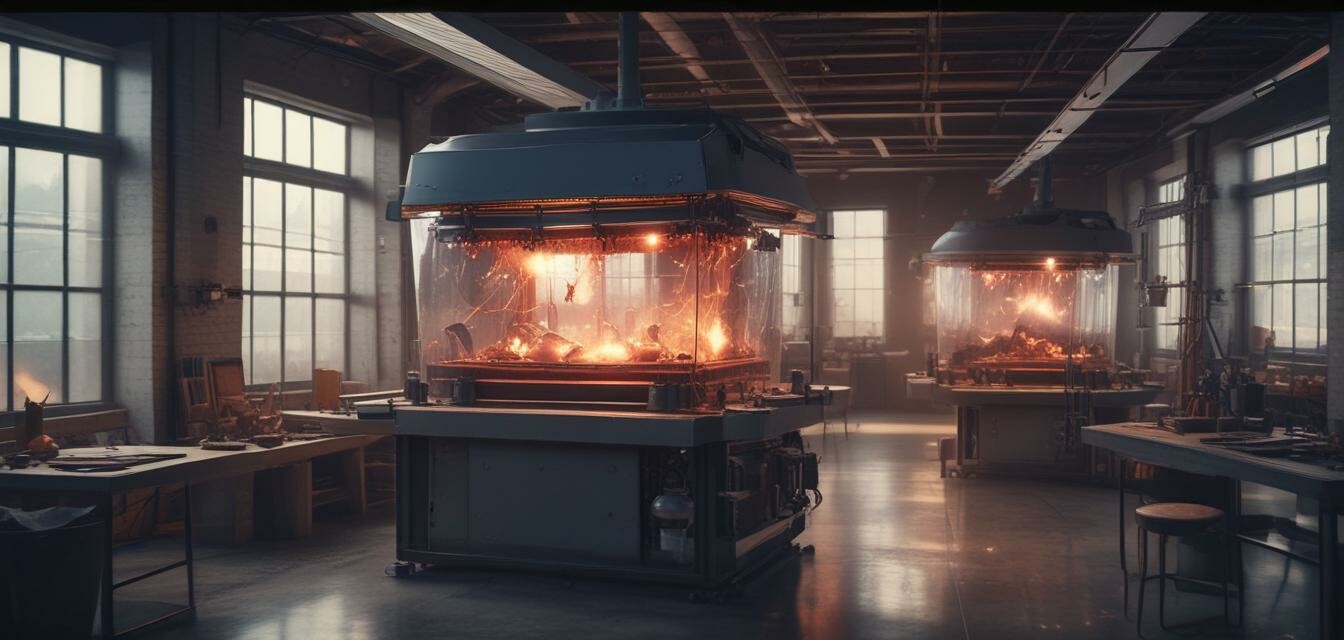
The Future of Glass Kiln Technology in 2025
Key Takeaways
- Emerging technologies will enhance efficiency and safety in glass kiln operations.
- Smart kilns are leading the way in industry advancements.
- Environmentally-friendly practices are becoming standard in glass making.
- The future will focus on customization for individual artists’ needs.
- Innovation in materials and design will change the landscape of glass artistry.
If you're passionate about creating beautiful glass art, understanding the future of glass kiln technology is essential. With advancements on the horizon, glass artists are poised to benefit from superior efficiency, control, and safety in their craft. Let's explore what the next few years hold for glass kilns.
Current Trends in Glass Kiln Technology
As we move towards 2025, several trends are starting to emerge in the world of glass kilns. From smart technology to eco-friendly solutions, these innovations are set to revolutionize how glass artists create. Here's a closer look at some of the current trends:
- Smart Technology: Increasing integration of smart technology allows for remote monitoring and control of glass kilns.
- Eco-Friendly Designs: Emphasis on sustainable practices leads to kilns that are both energy-efficient and environmentally conscious.
- Customization: Kilns are being designed to cater to the diverse needs of artists, offering features that enhance creativity.
The Role of Smart Kilns
Smart kilns are at the forefront of innovation, offering a range of features that traditional kilns lack:
| Feature | Description |
|---|---|
| Remote Control | Operate your kiln from your smartphone or tablet for added convenience. |
| Advanced Sensors | Real-time monitoring of temperature and humidity for precise control. |
| Custom Programs | Create specific firing schedules tailored to your unique projects. |
Environmental Considerations in 2025
As the world becomes more environmentally conscious, the glass-making industry is following suit. Manufacturers are focusing on making kilns that reduce energy consumption and employ sustainable materials:
- Utilization of renewable energy sources, such as solar power.
- Reduced emissions during the firing process.
- Use of recycled materials to create kiln structures and components.
Advancements in Material Technology
The materials used in kiln construction and operation are evolving, allowing for greater durability and performance. Here are some advancements expected in 2025:
| Material | Advantages |
|---|---|
| Refractory Bricks | High thermal resistance and longevity, ideal for consistent performance. |
| Insulation Materials | Improved insulation reduces heat loss, enhancing energy efficiency. |
| High-Temp Wires | Better durability under extreme conditions allows for more precise firing. |
Challenges Facing the Industry
While the future of glass kiln technology looks bright, numerous challenges remain:
- High initial costs for advanced technology may be prohibitive for many artists.
- Keeping up with constant technological changes can be overwhelming.
- Finding certified technicians for maintenance may pose a challenge.
The Impact on Glass Artists
For artists, these advancements will not only improve the glass-making experience but also open new creative avenues. As technology continues to evolve, the following benefits will be seen:
- Increased efficiency, allowing artists to focus more on creativity and less on technical issues.
- Safer working environments with advanced safety mechanisms built into kilns.
- Greater accessibility to advanced techniques, democratizing glass artistry.
Conclusion
The future of glass kiln technology is promising, with advancements that can greatly enhance the creative process for glass artists. From smart kilns providing real-time data to eco-friendly solutions supporting sustainability, the glass-making landscape is poised for transformation. As we head into 2025, artists can expect new tools that not only bolster their creativity but also redefine the possibilities within their craft.
Pros
- Enhanced safety features
- Energy efficiency and sustainability
- Greater control and precision
Cons
- High initial investment costs
- Complex technology may require training
To dive deeper into specific aspects of glass kilns, check out our Glass Kilns blog category for more insights. For different supplies and tools to enhance your glass-making journey, explore our Glass Kilns product category, where you can find amazing deals on top-quality equipment. Your future in glass artistry awaits!

